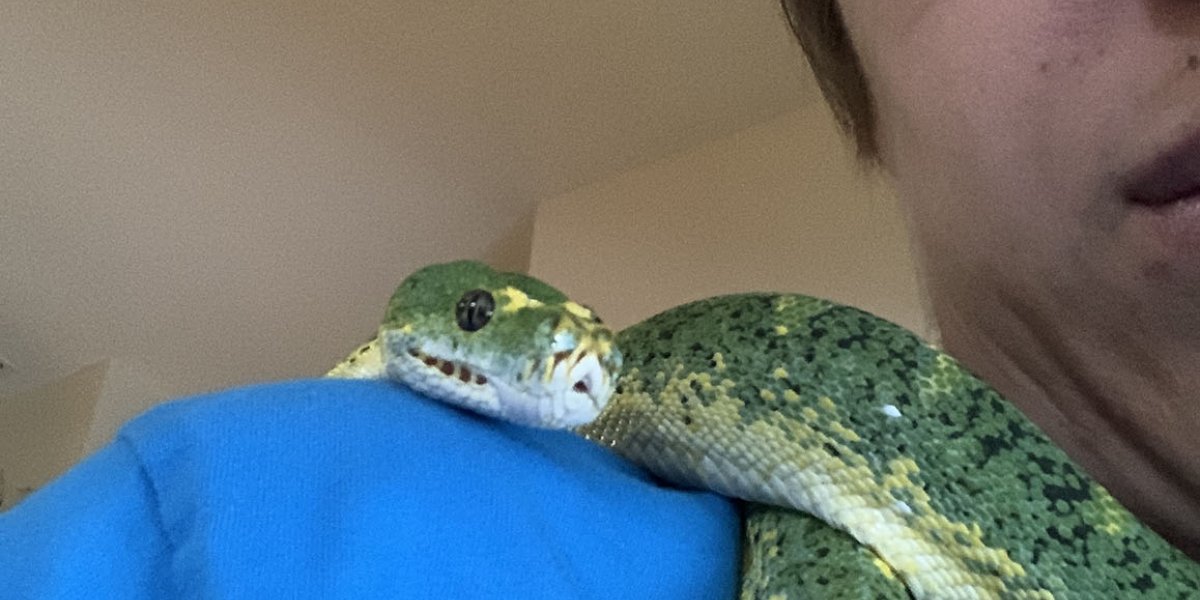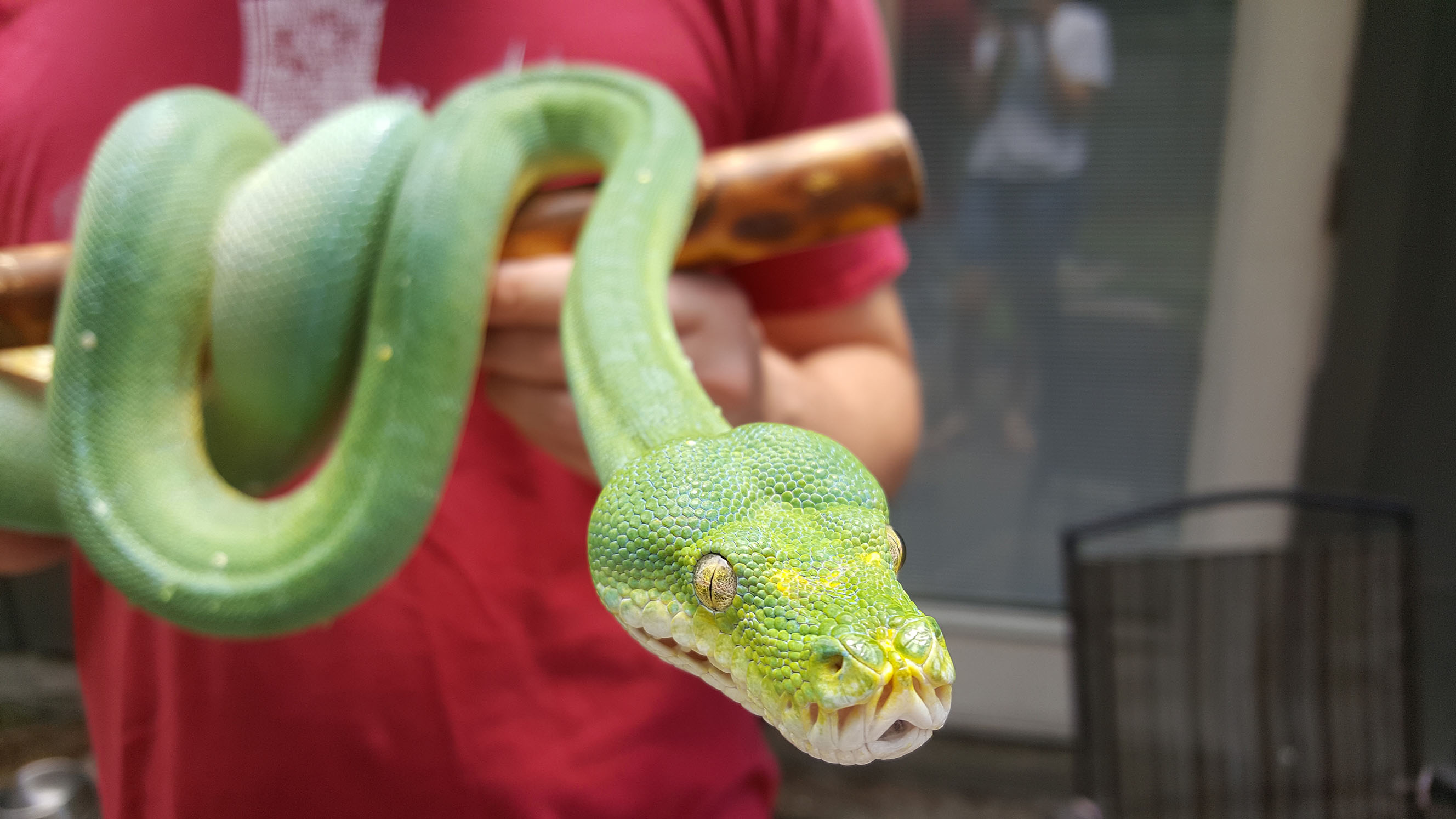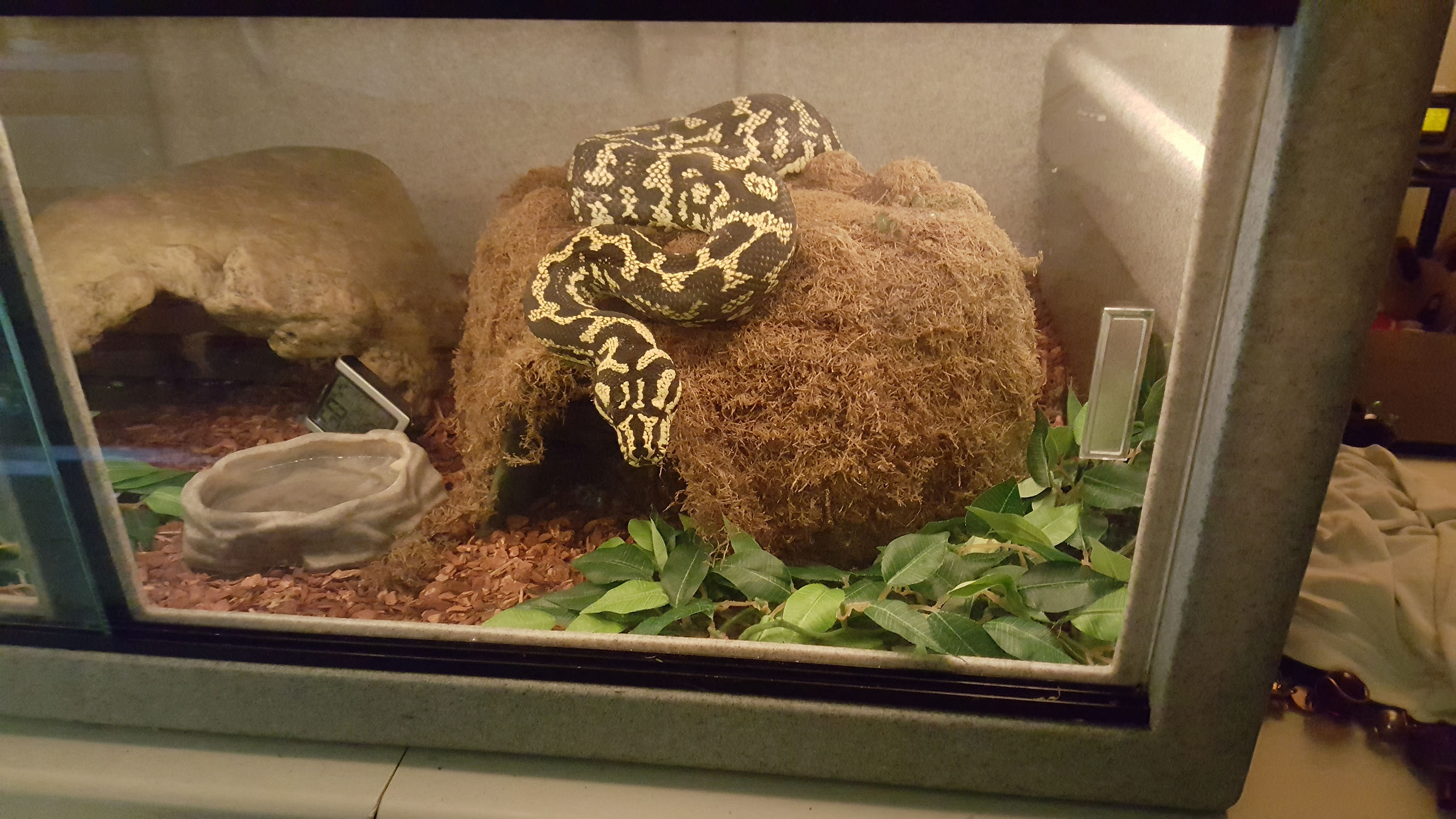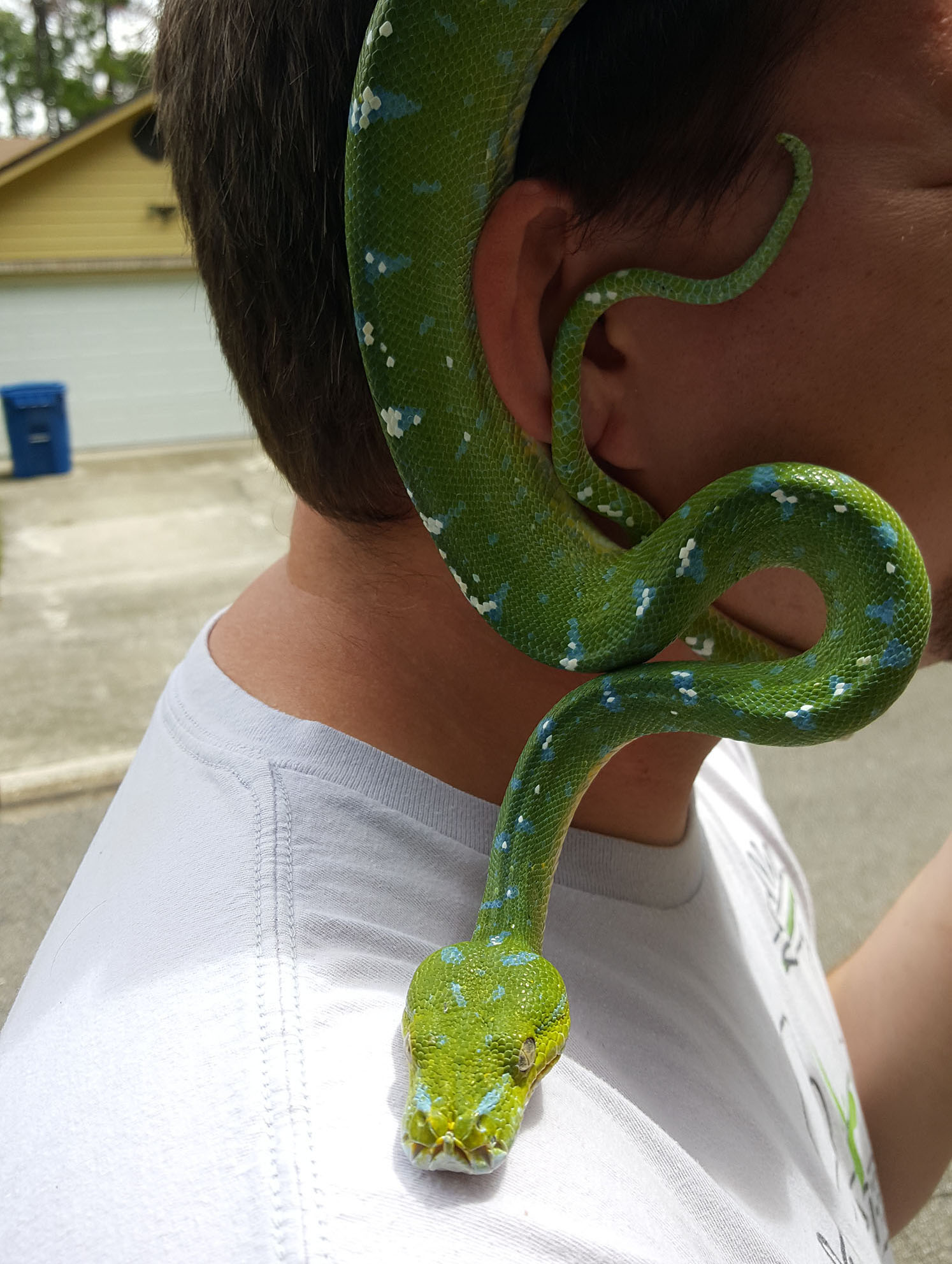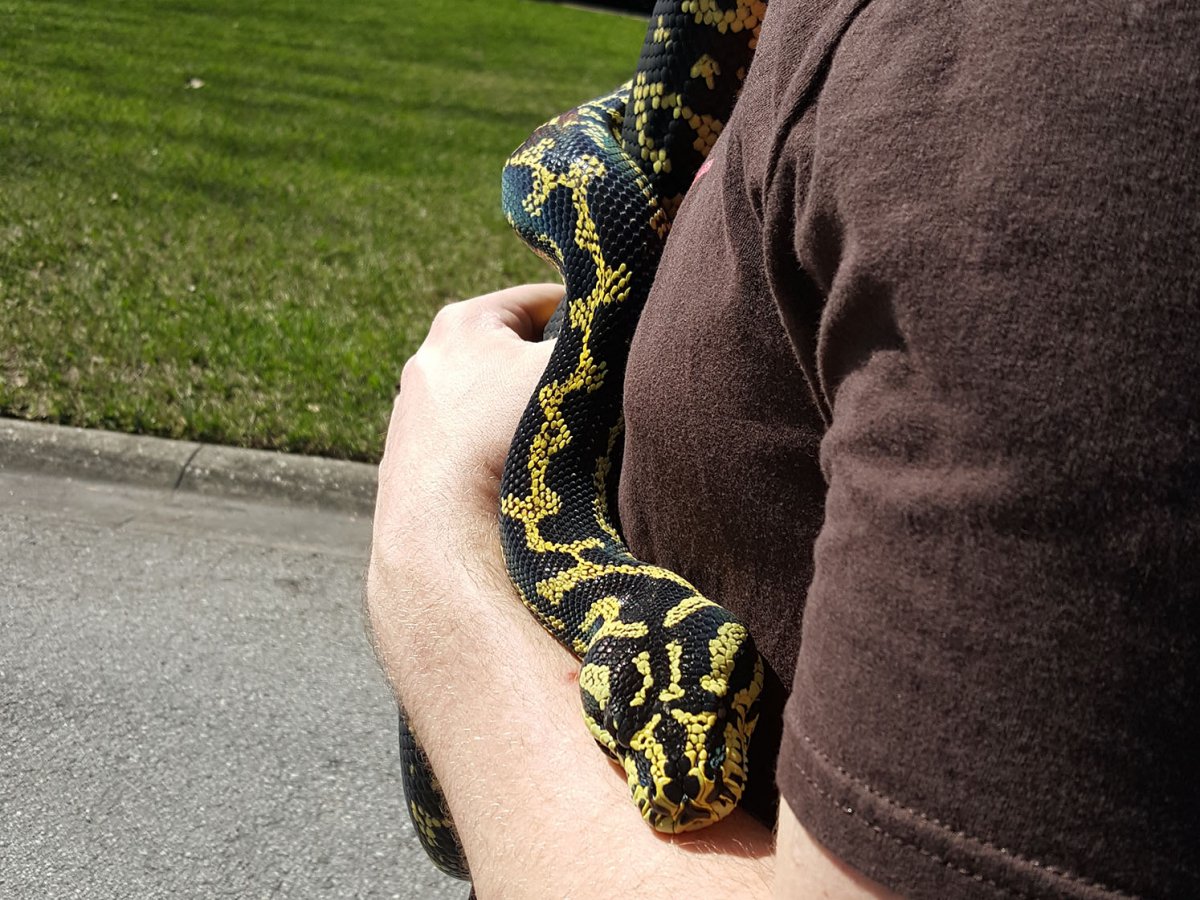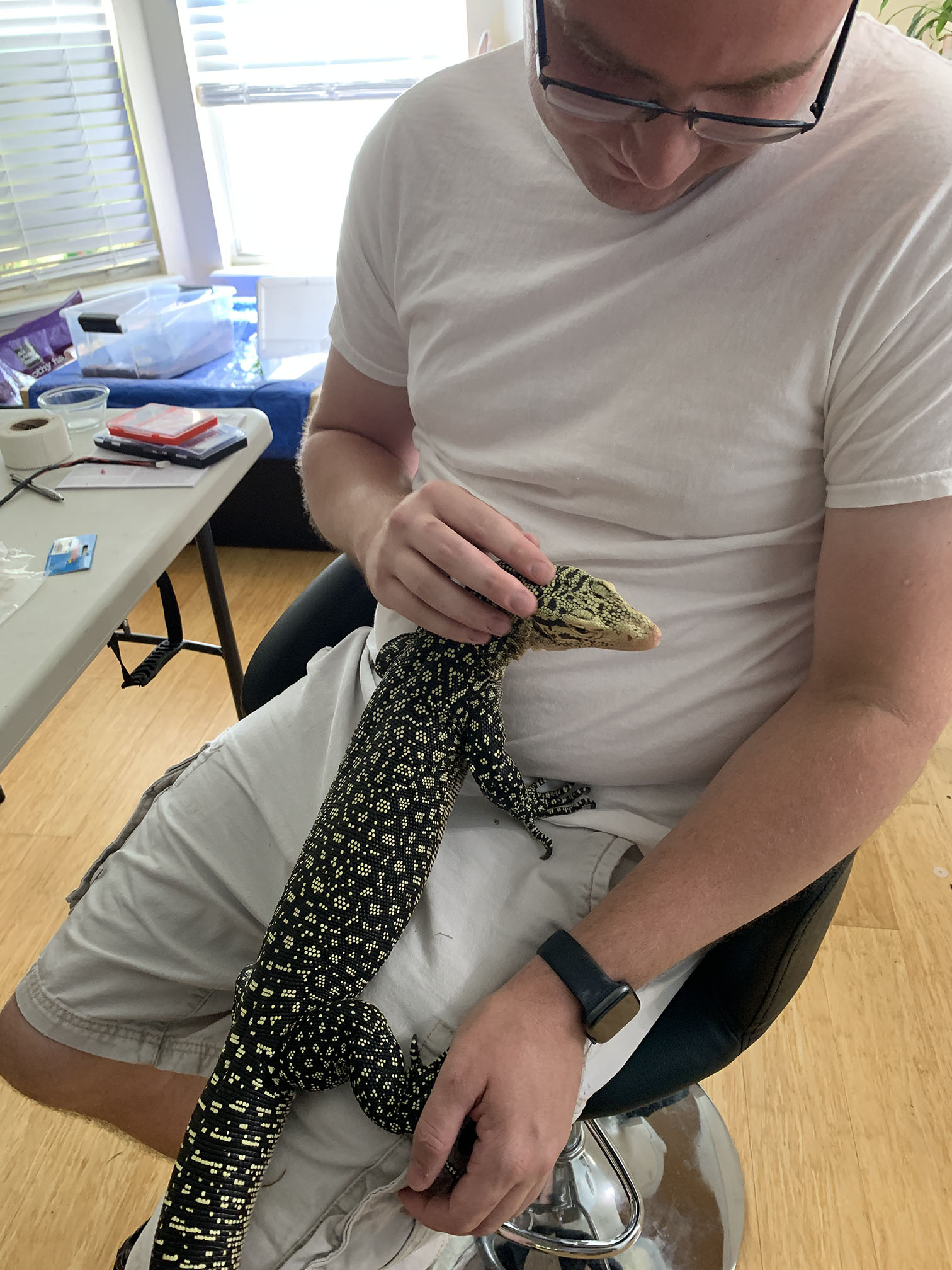When Reptiles are Jerks
“My animal is just a jerk!”
“Oh yeah, those ____ are really bitey.”
Sound familiar?
Even among reptile keepers, there are a lot of animals that get a bad rap, and generalizations are made about entire species being “generally aggressive”. This article will mostly focus on snakes, but you might find some lizard species follow the same basic principles.
There are a few things to consider about this. For individuals, make note of the animal's history and their current health. For the species, consider their species history and why and how they are generally kept.
First, the individual. It is true that individuals in a species vary in disposition and temperament. Some individuals are just more likely to climb out and explore. Others are more likely to sit and chill with you on the couch. Of the species of snakes I’ve kept, I really can’t say I’ve found any that are just nasty. In general, I’ve found them to have a calm nature, wanting to avoid conflict, and very trusting and intelligent when it comes to their care. Snakes I’ve experienced that are “just nasty” have simultaneously had serious health problems.
Origin History
Where did your animal come from? What is its history? Is it wild caught? Farm bred (this may amount to being wild caught)? Captive bred? Was it ever handled by humans before? How was it treated?
Reptiles are very resilient animals. However, capture from the wild and long travels without proper housing or food have a dramatic, powerful impact on an animal's well-being. No creature can withstand this without some psychological trauma.
Other treatment, while not specifically abuse, can drastically affect an animal’s behavior. Our carpet python, Lucy, lived her whole life in a drawer until we got her. She wasn’t aggressive, but she didn’t have a clue how to use a hide or other cage furniture. It took her about three to five weeks to experiment with, and finally make use of, a hide.
Feeding Habits and Conditioning
A lot of the time, snake striking is simply the result of a misunderstanding. The snake thinks you are bringing food. That face you see isn’t aggression, it’s enthusiasm (think of a dog who is absolutely sure you just walked with in a treat especially for him). That lizard who charges the door? He might be looking for a cricket, a mouse, or a tasty salad.
How was the animal kept? Was your snake kept in a tub with no hide, and fed such that whenever the drawer opened, he received a meal? Was he ever handled? A snake kept like this is very likely to strike as soon as its tub/enclosure is opened. In a similar way, if every time you open the door, your lizard receives food, he will expect food the next time the door opens. Conditioning works on humans and other animals; it is the same for reptiles.
For snakes, the hide in this scenario is particularly important. We keep our baby snakes in a rack system with tubs because it is an easier way to manage a bunch of snakes at once, and we can control all of the tubs’ temperatures at one time. However, when we open the drawer for our ball pythons, they have a hide. They are protected, and not immediately forced to interact as soon as the drawer is opened. Additionally, the drawer opening may mean any number of things—food, cleaning, or time out—so they never know what to expect. They wait to find out.
The time of day a snake is fed can be a useful factor in snake behavior as well. If a snake is fed during the day, it may expect food during the day—however, this is also the time you’ll likely want to handle the snake. If you assign a certain part of the day for feeding, it can alleviate confusion. Most snakes naturally hunt at dusk or very early in the morning. It is very easy to condition them to only eat at night. For diurnal snakes or lizards, it may be useful to have a 'food signal', such as a tapping noise with tongs or a specific feeding routine.
Reptile Health
A sick reptile is not a happy reptile. Problems, such as stuck shed obstructing vision, illness from parasites, respiratory infection, or other viral or bacterial infections can badly influence your animal’s behavior. If your animal is aggressive—whether it is a new addition or has already been in your collection for a while—it is important to first rule out all of these things and make sure your husbandry is correct for your species.
While helping out at a local pet store for a brief time, I interacted with a number of ball pythons that were sick with respiratory infections. They were not very nice. I remember one in particular was being kept in a drawer with nothing but a water bowl and dry, moldy substrate (figure that one out! Dry + moldy?). Her temperatures were in the low range of normal, too low for a sick animal. I picked her up (after she took a swing at me) and she let out a nasty gurgly hiss. I took her into the bathroom, turned the water on to fill the room with steam, and laid a warm, damp paper towel over her for a few minutes. We fixed her substrate and put a hide in for her. We asked the owner to turn the temperature up. The next time we checked on her, she wasn’t cured, but she was much friendlier and didn’t hiss or strike at me.
About the Species
The species of reptile can be very illuminating when it comes to behavior. I still stand by what I said—in general, I’ve found snakes to be calm, gentle, and wanting to avoid conflict.
Corn snakes, King snakes, and Ball Pythons seem to be pretty well-established as pets in the reptile trade. There are a lot of them available for sale, they breed readily in captivity, and people spend time now working on “pretty” morphs to appeal to new snake owners.
However, not all species are well-established in the pet trade. Green tree pythons, for instance, are difficult to breed in captivity, owing to their narrow temperature incubation window and difficulty in getting them to start eating on their own as hatchlings/neonates. Because of this, green tree pythons for sale are often wild-caught. Wild-caught animals are subjected to long periods without food, the stress of travel, and the stress of leaving their home—often in unsafe containers, as they are transported illegally and without regulation. “Farm-bred” animals are not always actually farm bred, but are in fact laundered wild-caught animals. I’ll talk about that more in a separate article.
In any case, I think I can imagine why animals who have endured days of travel and long periods of high stress and no food might be “bitey” or “unfriendly.”
Another good example of a species issue is the blood python. Blood pythons had a bad reputation for years, but that reputation is starting to fade as they become more established in the reptile market. Keepers have found that captive-bred blood pythons are much more friendly and easygoing than their wild-caught counterparts, and they can make very rewarding and fun pets.
How are they generally kept?
If a reptile is generally only sought after because of its appearance, or primarily kept as a display animal, it is less likely to be adapted to people and far more likely to be conditioned: “if the door opens, I get food.” Green tree pythons, emerald tree boas and other visually striking snakes, prized for their beauty, can make a very nice addition to your wall—but they are still living animals. If you only ever intend to look at your animal on the other side of a glass, you can’t really expect it to be friendly and accommodating whenever you finally do reach your hands into its world. Even the simple routine of changing out a water bowl, turning dirt or spraying an enclosure can be used to show an animal that “open door” does not always mean “food.”
Final Thoughts
It’s always important to consider where your reptile came from, how old it is, and how it was treated before coming into your life. History can play a big part in how your animal behaves. Health and husbandry can also be major factors.
Reptiles make excellent pets, but generally you get out what you put into them. If you don’t provide them anything to explore, they will be boring. If you don’t socialize them, they won’t be social. If you only ever feed them, they will only expect food when you open the door. Reputations built on the findings of others should be taken with a grain of salt: always consider where your angry animal came from before it was yours.

